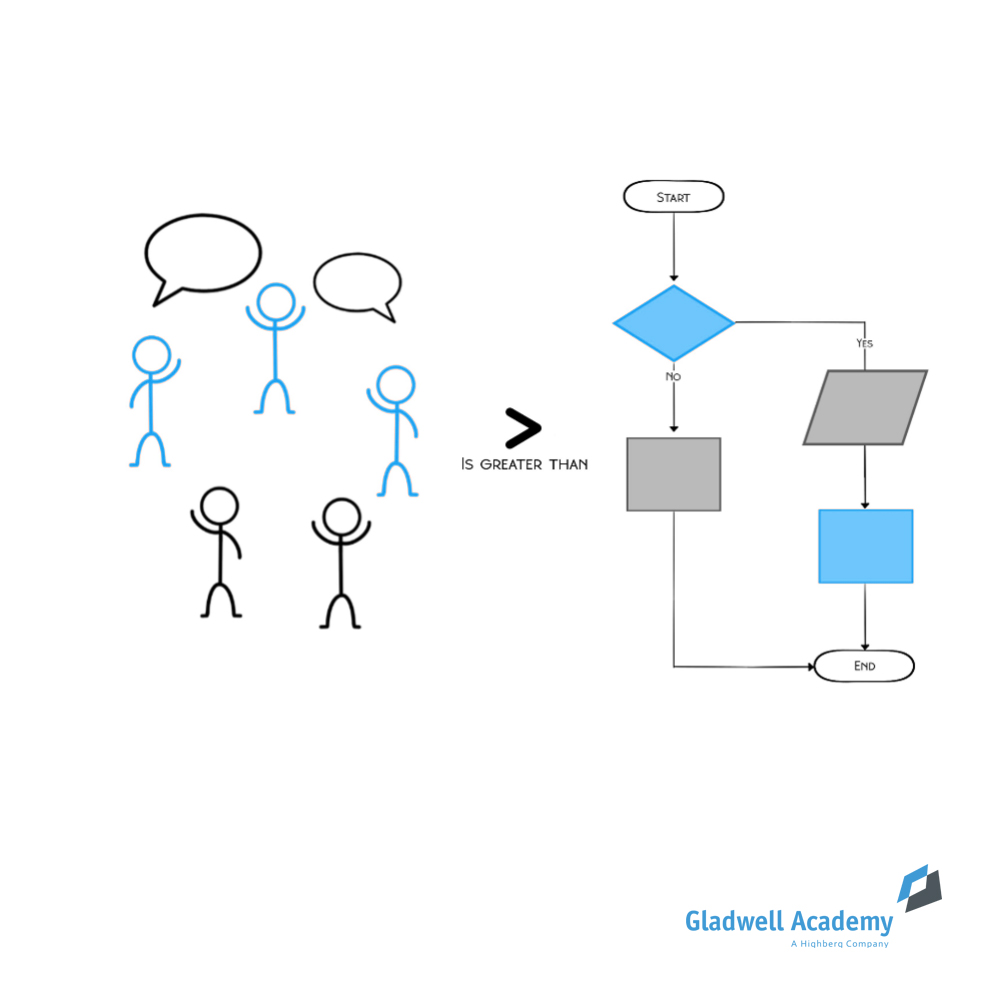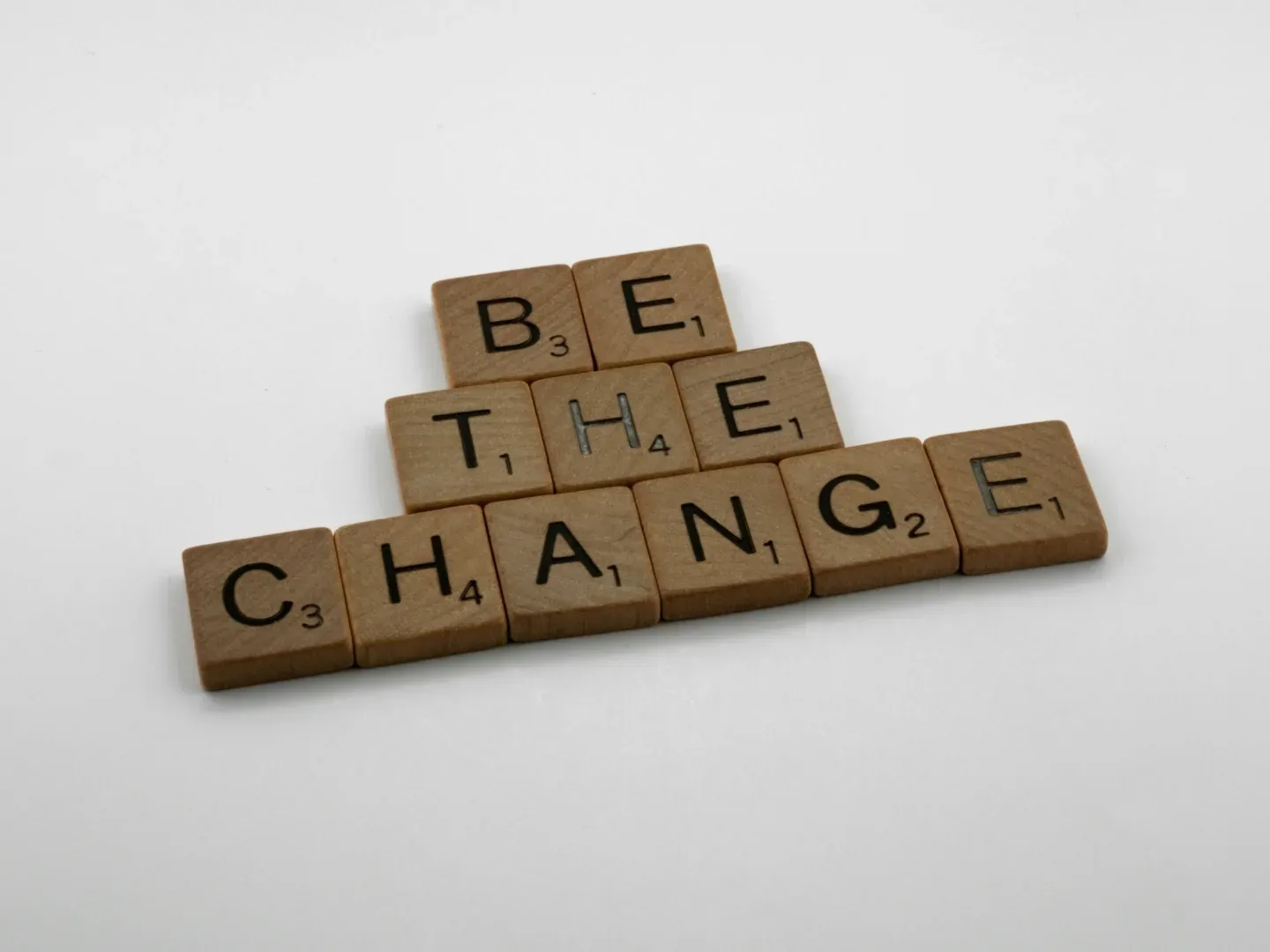Agile Manifesto | Value 1

Value 1
We value individuals and interactions over processes and tools.

Processes & tools are important aids that support us getting things done efficiently & effectively. In order to benefit from that efficiency and effectiveness bonus though, we need to use the right tools and continuously refine them (Principle 12).
“Efficiency is the ability to produce an intended result in the way that results in the least waste of time, effort, and resources. Effectiveness is the ability to produce a better result, one that delivers more value or achieves a better outcome.”
Therefore, systematic ways of achieving a result, such as processes and methods, and their continuous improvement are an important heritage from other human beings before or around us. A heritage that enables us to a quite different life-style than those of stone-agers who had comparatively less complex tools & processes at hand.
However, if we enslave us to those systematic ways of doing things or use the wrong tools for the wrong things, we lose sight of their actual purpose: aiding individuals (and their interactions with others) to achieve a certain goal. Using the sledgehammer to open a door is effective, but not efficient, because it results in an unnecessary damage. From my own experience I can also tell that using the wrong screwdriver is very frustratingly ineffective at best and damaging at worst. Traditional management, however, often dictates processes & tools from top-down, which then need to be unquestionably followed. The focus shifts from creating business value* to sticking to the plan (Principle 7). This runs the risk to be neither effective, nor efficient for the business. Inefficiency, ineffectiveness and – in the worst case – utter redundancy likely leads to waste, unhappy customers and burnt-out employees.
In contrast, Agility appreciates processes & tools for their aiding capability to human beings. The latter, however, is what comes first. In our VUCA world, we need to respond to change quickly to remain effective and this includes adapting the systematic ways we are doing things. Through continuous refinement & reflexion (Principle 12), processes and tools are continuously optimized with respect to their purpose and a focus on customer value.
Explore each principle & value with us
Introduction to the Agile Manifesto & Part 1 – The Agile Team: Skills & Culture
Principle 1: Our highest priority is to satisfy the customer through early and continuous delivery of valuable solutions*.
Principle 2: Welcome changing requirements, even late in development. Agile processes harness change for the customer's competitive advantage.
Principle 3: Deliver working solution* frequently, from a couple of weeks to a couple of months, with a preference to the shorter timescale.
Principle 4: Business people and team* must work together daily throughout the project.
Principle 5: Build projects around motivated individuals. Give them the environment and support they need, and trust them to get the job done.
Principle 6: The most efficient and effective method of conveying information to and within an agile team is real-time conversation.
Principle 7: Working solution* is the primary measure of progress.
Principle 8: Agile processes promote sustainable development. The sponsors, team*, and users should be able to maintain a constant pace indefinitely.
Principle 9: Continuous attention to technical excellence and good design enhances agility.
Principle 10: Simplicity – the art of maximizing the amount of work not done – is essential.
Principle 11: The best architectures, requirements, and designs emerge from self-organizing teams.
Principle 12: At regular intervals, the team reflects on how to become more effective, then tunes and adjusts its behavior accordingly.
Value 1: We value individuals and interactions over processes and tools.
Value 2: We value working solution* over comprehensive documentation.
Value 3: We value customer collaboration over contract negotiation.
Value 4: We value responding to change over following a plan.
*LEGEND:
Business Value: Business Value encompasses any deliverable, feature, or enhancement that directly contributes to customer satisfaction, employee well-being, or overall organizational success. It can encompass not only customer-facing elements but also internal enablers that improve efficiency and effectiveness within the organization.
Developers: has been exchanged by team to recognize that Agile Teams can encompass a diverse range of roles and functions beyond just software development
Iteration: An Iteration refers to a distinct phase or cycle within a development process, where a set of tasks or activities are completed in a defined timeframe. In Scrum methodology, an Iteration is known as a Sprint, typically lasting 2-4 weeks, during which a set of prioritized work items are completed.
Lead Time: Lead Time refers to the duration it takes for a task or project to move from the initial request or conception stage to its completion, including all necessary processes and steps.
MVP (Minimum Viable Product): The MVP is a basic, functional version of a product or service that includes essential features, allowing it to be deployed or released to gather early feedback from users or customers.
Software: has been replaced by solutions to account for the fact that Agility does not only apply to software development, but to any kind of value that a business offers to the customer.
Source of Quote from Maggie Wooll: https://www.betterup.com/blog/efficiency-vs-effectiveness
It might also interest you!

Agile Manifesto | Value 2

Agile Manifesto | Value 3
